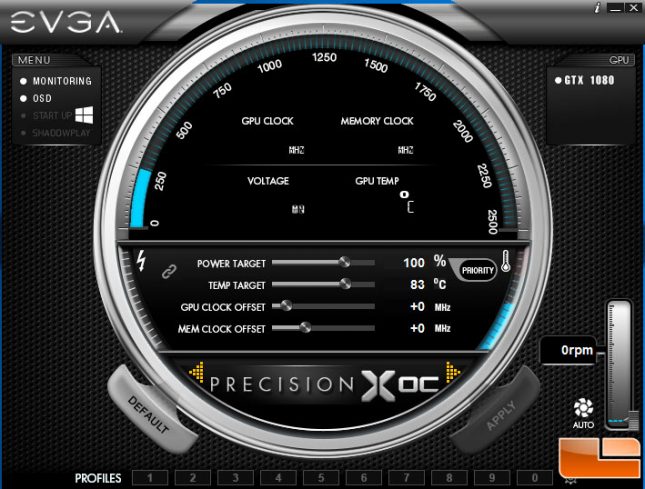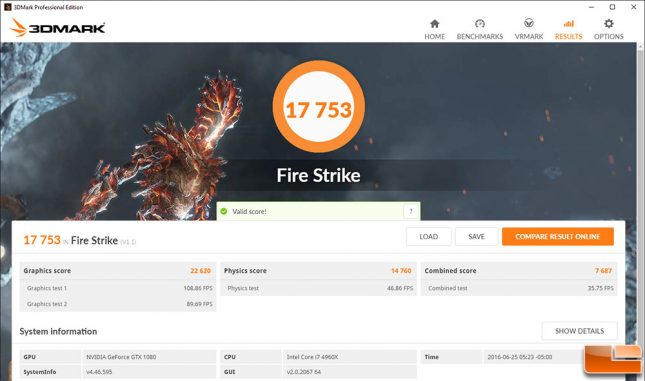EVGA GeForce GTX 1080 SC Gaming ACX 3.0 Video Card Review
EVGAGeForce GTX 1080 SC Overclocking
As you saw from the benchmarks on the previous pages, the NVIDIA GeForce GTX 1080 is no slouch at stock speeds! Those looking for even more performance can use an overclocking utility like EVGA Precision X to get even more performance from the GP104 ‘Pascal’ GPU. This is due to the fact that NVIDIA left plenty of overhead with particular GPU for enthusaists and gamers to tap into if they wanted to push the envelope a little bit. The NVIDIA GeForce GTX 108 is power limited in most game titles and it will often hit the stock temperature target of 83C, so it will also benefit from additional power and a higher temperature target.
We installed a latest version of the EVGA PrecisionX 16 overclocking utility to overclock the EVGA GeForce GTX 1080 SC video card! You can use whatever software utility you like for overclocking, but this was the only one available that supports the Pascal GPU architecture at the time of testing.
To overclock the EVGA GeForce GTX 1080 SC we raised the power target to 120% and the locked GPU Temp Target to 92C. We pushed the GPU Clock offset to +100MHz and the Mem Clock Offset to +600MHz on our card and found it was stable in the game titles that we tested. Not a huge overclock on the core, but better than nothing!
This overclock meant that we were running at up to 2025.0 MHz at times thanks to NVIDIA Boost 3.0 on the core and 11,200 MHz effective on the 8GB of GDDR5 memory.
EVGA GeForce GTX 1080 SC Overclocked (+100/+600):
By overclocking the EVGA GeForce GTX 1080 SuperClocked graphics card we were able to take the score of 17,300 on 3DMark Fire Strike and raise it up to 17,753. This is a 453 point increase in our overall 3DMark score, which represents a performance gain of 2.6 percent.
Let’s wrap this review up!




